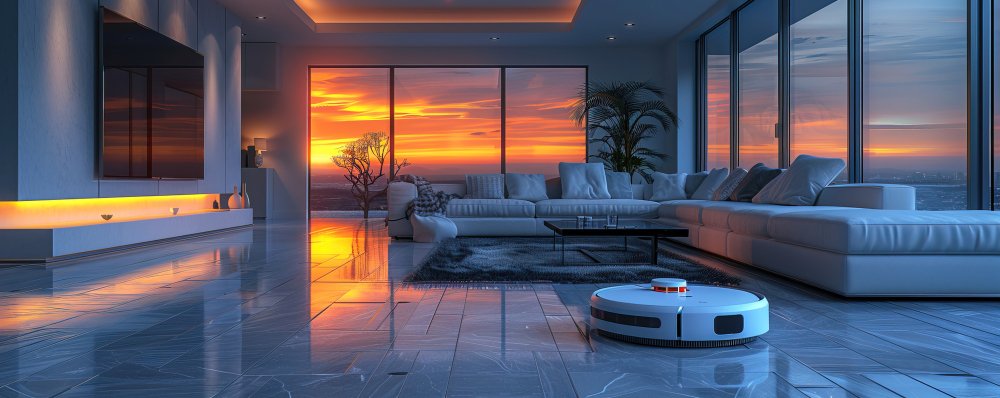The Evolving Dream Home in India
The aspiration for a perfect home in India is undergoing a profound transformation. Beyond the traditional considerations of space, location, and aesthetics, a new dimension has emerged: intelligence and connectivity. Modern homebuyers are increasingly envisioning a living space that not only provides comfort but also anticipates their needs and simplifies daily life. A smart home seamlessly integrates technology to enhance convenience, bolster security, and optimize energy efficiency. Residents gain the ability to control various aspects of their environment—from lighting and climate to security systems and entertainment—often remotely, through intuitive voice commands or a simple smartphone application.

The rapid adoption of digital technologies across India has made smart homes an increasingly vital aspect of contemporary living. The Indian home automation market is experiencing remarkable growth, having reached USD 3.56 Billion in 2024 and projected to hit an impressive USD 13.64 Billion by 2033, exhibiting a robust Compound Annual Growth Rate (CAGR) of 16.10% during 2025-2033. Another reliable projection indicates the market expanding from USD 3.9 Billion in 2024 to USD 15.7 Billion by 2032 at an even higher CAGR of 19.1% from 2026 to 2032.
This significant expansion is primarily fueled by increasing disposable incomes, rapid urbanization, and a growing consumer awareness of the tangible benefits smart homes offer, such as energy savings, unparalleled convenience, and enhanced safety. This consistent and high growth trajectory indicates a rapidly maturing market, reflecting a consumer base that is increasingly tech-savvy and actively seeking integrated technological solutions in their living spaces. This signifies a fundamental shift in consumer expectations, where smart features are transitioning from optional upgrades to expected amenities, especially in new developments. For homebuyers, understanding these dynamics is crucial for identifying a future-ready property that aligns with their lifestyle and investment goals.
To illustrate the market’s trajectory, consider the following snapshot:
India Smart Home Market Snapshot
| Metric | Value (Source 1: IMARC Group) | Value (Source 2: Verified Market Research) |
| Market Size (2024) | USD 3.56 Billion | USD 3.9 Billion |
| Projected Market Size (2032/2033) | USD 13.64 Billion (by 2033) | USD 15.7 Billion (by 2032) |
| CAGR (Forecast Period) | 16.10% (2025-2033) | 19.1% (2026-2032) |
This guide serves as a comprehensive resource for prospective homebuyers in India, designed to demystify the smart home landscape and help them discern which smart home features India truly matter in their next property.
Why Smart Homes are Becoming a Must-Have in India
The surge in demand for home automation India is driven by a powerful confluence of factors shaping modern Indian society. Increasing disposable incomes play a significant role, with average household disposable income in urban India rising by 11.9% in 2023-24, empowering more consumers to invest in premium smart home products. Rapid urbanization across the country further contributes to this demand, as it necessitates modern, convenient, and efficient living solutions that smart homes are uniquely positioned to provide.

Proactive government initiatives, such as the Smart Cities Mission, also actively encourage the incorporation of smart technologies into urban infrastructure, accelerating smart home adoption nationwide. Moreover, the increasing integration and accessibility of Internet of Things (IoT) and Artificial Intelligence (AI) technologies are enabling the creation of highly personalized and responsive home environments. This blend of economic capacity, urban living trends, and technological advancement signifies a profound societal aspiration among Indian consumers for a modern, convenient, secure, and sustainable lifestyle.
Smart homes are uniquely poised to address these evolving aspirations, offering tangible solutions that align with broader national development goals and consumer desires for an improved quality of life.
The advantages of smart homes extend beyond mere technological novelty, offering tangible benefits that resonate deeply with the practical and aspirational needs of Indian families:
- Enhanced Convenience: Smart home devices offer unparalleled convenience through features like remote control and automation via mobile applications. Voice-controlled devices, such as the Amazon Echo Dot, are rapidly becoming central hubs for smart home control, with the voice recognition market in India projected to grow by a remarkable 38% in 2023.
- Improved Security: Advanced smart security systems, including smart locks, AI-powered cameras, video doorbells, and real-time alerts, provide crucial peace of mind. This is particularly relevant given that cybersecurity incidents involving IoT devices increased by 47% in 2023 , making robust security features an increasingly critical consideration for safeguarding families and assets.
- Significant Energy Savings: Smart home energy management systems have demonstrated their effectiveness, reducing household electricity consumption by an average of 23% in pilot programs across major Indian cities. The surge in smart meter installations, up 42% in 2023 , further underscores this trend, aligning perfectly with India’s growing focus on sustainability and reducing carbon footprints. This dual motivation of financial savings and environmental responsibility makes energy efficiency a highly attractive and practical smart home feature.
- Increased Property Value: Investing in smart home features India is a strategic financial move. Smart homes have been shown to significantly boost property value and command higher prices due to their enhanced efficiency, security, and modern appeal. Studies indicate that buyers are willing to pay more for homes equipped with smart features, ensuring a strong Return on Investment (ROI). They are increasingly seen as a “strong investment” that “future-proofs” properties against evolving market demands, transforming houses into intelligent, responsive homes.
Top Smart Home Features to Prioritize for Your Indian Home
When considering your next property, focusing on specific smart features can profoundly impact your living experience and future investment.

Smart Security Systems: Peace of Mind at Your Fingertips
Modern smart homes offer a robust suite of security features designed to provide unparalleled peace of mind. Look for integrated smart locks, such as the August Wifi Smart Lock, which allow keyless entry and remote access. AI-powered cameras, like the Nest Cam, are capable of capturing sharp images day and night, while video doorbells, such as the Nest Doorbell, offer advanced features like package, person, and vehicle recognition. These systems often provide real-time alerts, two-way communication, and cloud storage for video, with some, like the Nest Cam, offering 3 hours of free video storage.
These features are crucial for families seeking safe and secure living environments, particularly in urban areas, as they create a “virtual neighborhood watch”. This allows individuals to monitor their property and grant secure entry remotely. Given increasing concerns around privacy and security, with 72% of potential users expressing worry , robust and reliable security systems are not just desirable but a foundational component of a modern home, directly addressing a core need for safety and protection.
Energy Efficiency & Sustainability: Go Green, Save Green
Embracing energy-efficient smart home features India offers both financial savings and environmental benefits. Smart lighting systems, exemplified by the Philips Hue White Starter Kit, provide energy-efficient LED bulbs that can be controlled remotely, scheduled, and even synced with multimedia content. These systems are compatible with various smart home ecosystems, including Apple HomeKit, Alexa, and Google Home.
Intelligent thermostats, such as the Ecobee Smart Thermostat with built-in Alexa and remote sensors, ensure that every room is cooled or heated precisely as needed, optimizing energy usage and contributing significantly to reducing household electricity consumption. Automated water management systems, while less commonly detailed, are in high demand for their ability to save water and reduce wastage, aligning with broader sustainability goals.
Looking ahead, the concept of Energy Independence is rapidly emerging globally, with homes transforming into “micro power plants” through integrated solar panels and battery storage systems. These setups can achieve up to 90% grid independence, potentially saving families $1,000-$1,500 annually in sun-rich regions. Future innovations also include peer-to-peer energy trading via blockchain, allowing homeowners to monetize excess solar energy. These features not only lower utility bills but also significantly reduce a home’s carbon footprint, aligning with the growing consumer sentiment towards sustainability and environmental responsibility prevalent in India.
Ultimate Convenience & Automation: Your Home, Your Way

The future of home automation India is characterized by effortless control and intelligent anticipation. Voice-controlled assistants, such as the Amazon Echo Dot, are rapidly becoming central control hubs for smart homes, offering intuitive control and displaying information like time, temperature, and even mathematical answers. Shipments of smart speakers in India increased by 26% year-on-year in 2023, demonstrating their widespread adoption.
Look for properties that support integrated IoT ecosystems. The Samsung SmartThings hub, for example, utilizes Z-Wave and Zigbee antennas to pair with a wide array of smart home devices, enabling coordinated actions during emergencies like triggering alarms, turning on lights, or unlocking doors. The evolution of smart homes is moving towards predictive automation, where AI-powered systems learn daily habits to automatically adjust temperature or lighting even before a command is given.
This “self-tuning” home makes automation feel natural and effortless. AI-powered predictive maintenance can also identify potential appliance problems weeks in advance, potentially saving families an average of $200 annually on maintenance costs. This represents a significant leap, where homes are not just tools responding to commands but intelligent systems that learn, adapt, and anticipate needs, elevating convenience to a truly seamless and personalized living experience.
A significant development for home automation India is the Matter protocol. This unified standard, developed by over 550 technology companies globally, ensures that smart devices from different manufacturers can work together seamlessly. This directly addresses the “Technical Complexity and Interoperability Issues,” a hurdle reported by 63% of Indian smart home users who found it difficult to connect devices from different manufacturers.
Matter-enabled control hubs simplify home management, allowing users to create personalized scenes, such as dimming lights, lowering shades, and starting music with a single button. Its local control capabilities also mean faster response times and continued functionality even during internet outages, a crucial benefit given connectivity challenges in some regions. This protocol is poised to simplify and standardize the smart home experience for Indian users, making it far more accessible and appealing.
Simple yet effective smart plugs, like the Wemo Wifi Smart Plug, can transform any traditional appliance into a smart one, offering compact and portable control. For household chores, robotic vacuums such as the Roborock S4 Max simplify cleaning with easy house mapping and scheduled routines.
Health & Wellness Applications: A Healthier Home Environment
An emerging and rapidly growing category in smart homes focuses on health and wellness. These features include advanced air quality monitors, which have experienced a 52% growth rate, and sophisticated sleep tracking systems, with a 47% growth rate. These devices contribute to a healthier indoor environment and provide valuable insights into personal well-being. The sales of smart home health monitoring devices in India increased by a substantial 67% in 2023. Currently, 39% of smart home users in India have at least one health-related device in their ecosystem. This trend reflects a broader societal shift towards health consciousness and a desire for homes that actively support well-being, indicating a maturing market where consumers seek more than just basic automation.
To summarize the key smart home features:
Top Smart Home Features & Their Core Benefits for Indian Homebuyers
| Feature Category | Key Examples (Gadgets/Concepts) | Primary Benefit for Indian Homebuyers |
| Smart Security | Smart Locks, AI Cameras, Video Doorbells | Peace of Mind, Enhanced Safety |
| Energy Efficiency & Sustainability | Smart Lighting, Intelligent Thermostats, Automated Water Management | Reduced Bills, Green Living, Environmental Impact |
| Convenience & Automation | Voice Assistants, Integrated IoT, Predictive AI, Smart Plugs | Effortless Daily Life, Personalized Comfort |
| Health & Wellness | Air Quality Monitors, Sleep Tracking Systems | Enhanced Well-being, Healthier Environment |
Navigating the Smart Home Journey: Key Considerations
While the benefits of smart homes are compelling, prospective buyers in India should be aware of certain considerations to ensure a smooth transition into smart living.
Understanding the Investment: Costs and ROI
It is important to be realistic about the initial investment required for a smart home system. A typical smart home cost India ranges between ₹80,000 and ₹150,000, which can account for 25-40% of middle-income households’ annual income. For luxury integrated systems, costs can escalate to ₹20 lakh or more. High initial setup costs were cited as the primary barrier by 68% of potential customers in a 2023 survey.

However, despite the upfront cost, investing in smart home features India is a strategic move. As highlighted, smart homes significantly boost property value and ensure a strong ROI. They are considered a “strong investment” that “future-proofs” properties against evolving market demands and preferences. The long-term savings on energy bills further contribute to this financial return. This perspective encourages viewing the initial outlay not as an expense, but as a strategic, long-term investment that yields significant dividends over time, both financially and in terms of improved living standards.
Connectivity & Interoperability: Ensuring Seamless Integration
The backbone of any smart home is robust and reliable internet connectivity. Wi-Fi is currently the dominant technology for smart home devices in India. However, challenges exist in India regarding internet availability and reliability, which can still be unpredictable and, in some cases, insufficient for seamless smart device operation. Deeper issues include the limited availability of unlicensed spectrum, interference from overlapping networks, and inadequate fibre backhaul, which restrict high-speed, reliable services, especially in densely populated urban areas and rural regions.
A significant hurdle for Indian users has also been the difficulty in connecting devices from different manufacturers. A 2023 study found that 63% of smart home users in India reported this difficulty, with 57% requiring technical assistance within the first month of installation and 41% experiencing persistent interoperability issues. As previously discussed, the Matter protocol is poised to revolutionize this by unifying connectivity and ensuring devices from various brands work together seamlessly.
This is a critical development for overcoming interoperability challenges in the Indian market. The functionality of a smart home extends far beyond individual devices; its performance is intrinsically linked to the quality and reliability of its underlying connectivity infrastructure. It is therefore advisable to assess the quality of a property’s internet infrastructure and the availability of reliable professional support for installation and troubleshooting.
Privacy & Security: Protecting Your Digital Sanctuary

Privacy and data security are major concerns for potential smart home users in India. Cybersecurity incidents involving IoT devices increased by 47% in 2023. A survey revealed that a significant 72% of potential smart home users had substantial concerns about privacy and data security, with 38% explicitly postponing purchases due to these worries. This indicates that trust and data protection are becoming paramount considerations. As smart homes become more integrated and collect increasingly personal data, consumer anxiety regarding data misuse, breaches, and unauthorized access naturally escalates.
To mitigate these risks, it is important to choose reputable brands with strong privacy policies. Users should always employ strong and unique passwords for all devices and networks, regularly update device firmware and software, and understand what data their smart devices collect and how it is used. Building and maintaining this trust is crucial for wider market penetration, transforming hesitation into confidence.
Here’s a summary of these critical points:
Key Considerations for Smart Home Adoption in India
| Consideration | Key Challenge/Statistic (in India) | Solution/Mitigation Strategy |
| Initial Investment | ₹80K-₹150K (25-40% of middle-income income) | Long-term ROI, Energy Savings, Property Value Increase |
| Connectivity & Interoperability | 63% difficulty connecting devices | Matter Protocol, Robust Internet Infrastructure |
| Privacy & Security | 72% concerned about privacy | Reputable Brands, Strong Passwords, Regular Updates |
Choosing the Right Smart Home Ecosystem for You
When exploring properties, one might encounter homes with fully integrated smart systems or those that allow for individual device integration. Integrated systems, often offered by developers in new properties, provide seamless control and often better interoperability, though they might offer less flexibility in device choice. Conversely, purchasing individual devices allows for greater customization and a phased approach, but it can sometimes lead to interoperability challenges, though the Matter protocol is rapidly alleviating this concern.
It is always wise to consider the scalability and compatibility of any chosen system or individual device with future technologies. Prioritizing Matter protocol-enabled devices will be a wise move for long-term compatibility and ease of use. Regionally, South India currently dominates the smart home market, particularly in tech hubs like Bengaluru, Hyderabad, and Chennai, due to a technologically savvy population and higher disposable incomes. Meanwhile, North India is emerging as the fastest-growing region, driven by urban expansion in cities like Delhi-NCR, Chandigarh, and Jaipur. This suggests potential regional differences in feature availability, developer offerings, and adoption rates, which buyers might observe.
Conclusion: Your Smart Home Awaits!
Embracing smart home features India can profoundly enhance a living experience, offering unparalleled convenience, robust security, significant energy efficiency, and a healthier environment. These features not only elevate daily life but also contribute to a substantial increase property value smart home India. Smart homes are not merely a fleeting trend but represent the undeniable future of modern living, especially in a rapidly advancing and technologically eager market like India. They are transforming houses into intelligent, responsive homes that actively work to provide comfort, safety, and efficiency.
Ready to experience the future of living? Explore properties with cutting-edge smart features in India today and step into your dream smart home!
Also Read – The Smart Move: Why Investing in New Developments in India is a Game-Change
Disclaimer: The information provided in this blog post is compiled from various sources and is intended for general informational purposes only. While we strive for accuracy, the dynamic nature of the market and technology means that 100% accuracy cannot be guaranteed. Readers are encouraged to conduct their own research and consult with professionals before making any decisions based on this information.

